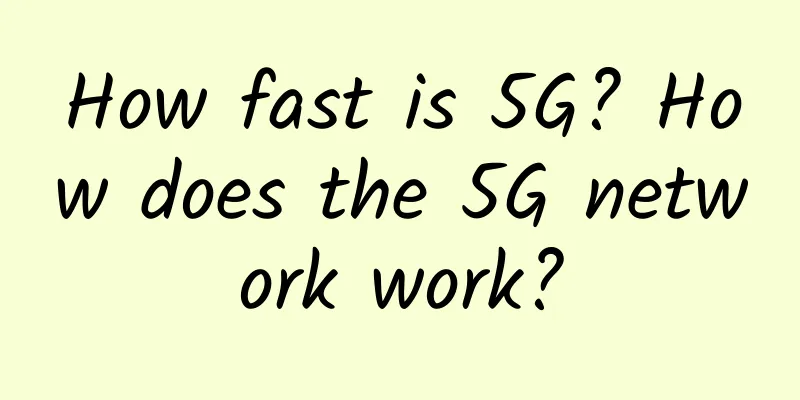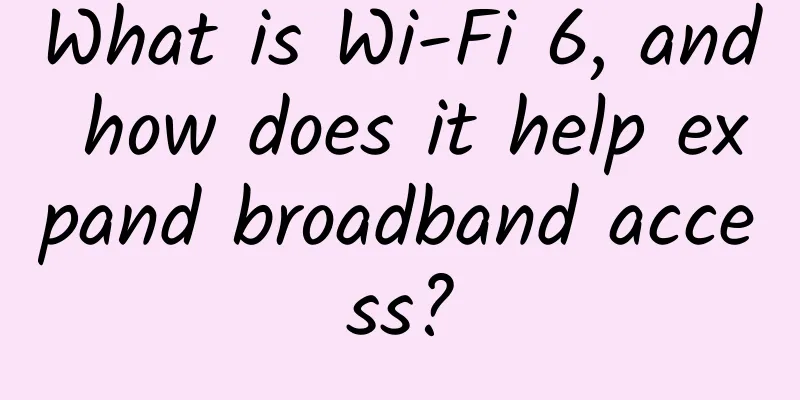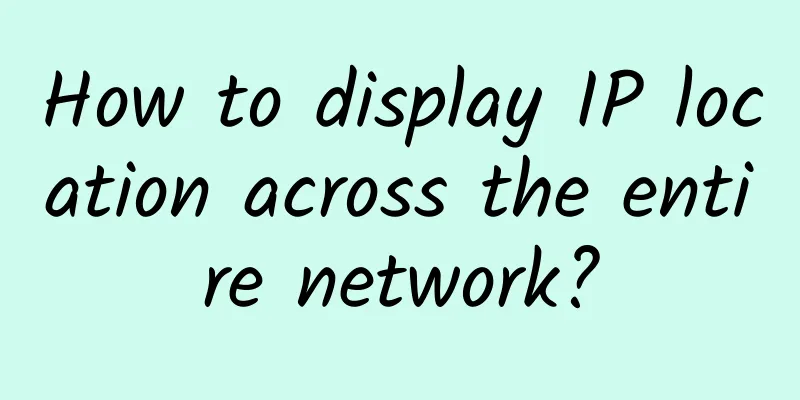How fast is 5G? How does the 5G network work?

|
4G LTE has been providing ultra-fast data to millions of customers, but with more carriers looking to use more advanced 1 Gbps networks and new products with phones that have faster modems, it's hard not to wonder if we're close to the next step, 5G networks, very soon. Unfortunately, we're all used to hearing that there are still some technical hurdles to overcome and a lot of infrastructure investment to be made before consumers can start receiving their first 5G signal, but that date is drawing to a close. If you've been wondering at what stage all these new technologies are at, and how far away 5G is, 5G in the Americas, an industry trade association and the leader in 5G and LTE in the Americas, recently published a paper specifically on how the industry is steadily moving forward. You can read the full white paper here, but we've dug into some of the more relevant parts so you don't have to, and also included some additional insights of our own. 5G - Technology Overview Before we delve into the details, let’s briefly review the arrival of 5G in the next few years. Peak network data rates will reach 20 Gbps download and 10 Gbps upload speeds, a 20-fold increase over 4G. Other 5G improvements are expected to include mobility support of up to 500 km/h, 1 ms user plane latency, support for 1 million devices per square kilometer, and bandwidth of up to 1 GHz from multiple radio operators. As for the timeline, the first 5G specifications will be completed in early 2018, enabling the first standards-based networks to be deployed between 2019 and 2020. Finding the spectrum Broadly speaking, licensed spectrum remains a precious commodity for operators and currently appears insufficient to meet the high standards pursued by the evolving 5G standard. To help sidestep this problem, 5G is looking to a wide range of spectrum options, including new ultra-high frequency bandwidths above 6 GHz and taking advantage of unlicensed bands to increase capacity. The downside to this approach is that these high frequencies don't travel very far or penetrate walls, and low-frequency bands are in short supply. As a result, future 5G networks will look more patchwork than today's networks, combining short-range, medium-range, and long-range coverage to increase capacity. In practice, this means utilizing existing 4G LTE bands and adopting 5G New Radio (NR) technology over time, combining the two by evolving existing carrier aggregation and larger multi-antenna technologies. 5G NR not only supports a range of new uses, such as massive IoT, but also supports multiple spectrums. The aim is to enable seamless transitions and simultaneous connections across long distances, between available bands in cell and Wi-Fi frequencies. Therefore, a combination of lower and higher frequencies is crucial for 5G operation. In order to make it financially viable for operators, existing 4G LTE bands will likely remain unchanged for the foreseeable future. Instead, 5G NR development and new radio frequencies will be developed, primarily to take advantage of currently unused cmWave and mmWave frequencies. These short-range stations would likely be made of dense arrays of antennas, which is exactly what is needed to increase capacity. Furthermore, it has been demonstrated that larger antenna arrays can improve the range achieved at even very high frequencies. A 2016 NTT DOCOMO study presented at the Brooklyn 5G Summit showed that at 3.5 GHz, a 77 x 77 antenna array housing 6,000 elements could cover more than a kilometer, and even more than 800 meters at 30 GHz. Even so, this would require potentially 40 to 50 base stations to provide the same area coverage as 8 to 10 4G stations, although the speeds would be much higher. These high-frequency Massive MIMO antenna arrays will require beamforming and/or bream tracking in order to maximize data efficiency for users. This means that the antenna will send a focused data stream to the user instead of the current omnidirectional broadcast. This is done by triangulating the user's location and using smart algorithms to send data back along the optimal path. Obviously, this is more complex and expensive than existing technology, but will greatly improve bandwidth efficiency and allow the use of very high frequency bands. However, research is still ongoing and the final specifications for these high-frequency antenna technologies have not yet been finalized. However, there is more to the 5G standard than just high-frequency spectrum. Increasing coverage and bandwidth over long distances in the low-frequency spectrum is equally important, not only for consumers but also for the Internet of Things and other connected markets. In the United States this year, the Federal Communications Commission held an auction of low-frequency 600 MHz spectrum previously used for TV broadcasting, with T-Mobile purchasing 45% of the spectrum. We may see additional low-frequency spectrum reuse in the coming years, which will be used to extend 4G and 5G coverage over long distances. As TV and broadcast customers move to consuming more data digitally and over the internet, the need for dedicated analog spectrum is decreasing, so it makes sense to reuse it for faster 5G data. 3GPP is currently standardizing 5G frequencies in Release 15, and expects to complete the non-standalone version of 5G in March 2018. Unlicensed spectrum With new capacity on wireless cell towers, superfast 5G speeds in built-up areas will likely require aggregation of small-cell Wi-Fi, backed by fiber broadband, in order to handle the large number of users. To do this, 5G combines aggregated LTE and 5G signals with additional data transmitted in unlicensed spectrum. The 2.4 GHz and 5 GHz bands are commonly used by today's WiFi routers, with the 3.5 GHz band available to add more spectrum in the future. The FCC is also opening up the 3550 to 3700 MHz CBRS band for future use with these small cells. We don’t even have to wait until 5G technology starts to emerge around 2020 to start seeing the benefits of unlicensed spectrum. Smartphone processor kits are already adding support for LTE-U, and the latest 3GPP Release 13 outlines the License Assisted Access (LAA) specification and support for LWA/LWIP. In the United States, T-Mobile has already established its LTE-U service in Bellevue, Washington, Brooklyn, New York, Dearborn, Michigan, Las Vegas, Nevada, Richardson, Texas, and Simi Valley, California. LTE-U is being led by Qualcomm and its partners. Essentially, the idea is to make LTE bands operate in the same frequency range as regular Wi-Fi signals. However, due to FCC regulations, LTE-U devices must meet the same power limits as Wi-Fi devices that exist today, limiting their range. Even so, adding LTE bands to the Wi-Fi spectrum is a way to provide additional capacity. An important question raised by unlicensed spectrum is how will this affect regular Wi-Fi users? Will the quality of their home connections be affected by smartphone users clogging up broadband data? Using unlicensed spectrum is certainly not the final answer to the capacity issue, and care is being taken to ensure that current infrastructure does not conflict with LAA. LAA is essentially a standardized version of LTE-U managed by 3GPP. The biggest difference between the two is that LAA requires a “listen before talk” feature that scans local Wi-Fi usage and automatically selects a 5 GHz channel without WiFi users, but at the expense of system latency. Failing that, the technology will share the same channels, but LAA data will be prioritized lower than other Wi-Fi users in order to share data fairly. Listen before talk is a requirement for unlicensed operation in Europe and Japan, but is not reflected in regulation in the United States, South Korea, or India, hence why those countries are concerned about LTE-U. The upcoming enhanced LAA (eLLA) specification in Release 14 will also allow the uplink to use unlicensed spectrum. Another option is to piggyback on existing Wi-Fi networks rather than deploying new LTE cell technology into unlicensed spectrum. LTE-WLAN aggregation (LWA) is also being standardized as part of 3GPP’s Release-13 and enables the seamless use of LTE and Wi-Fi networks simultaneously. In this case, LTE signals do not compete with Wi-Fi, but rather the phone simultaneously connects to traditional low-frequency LTE bands and common Wi-Fi hotspots and aggregates data between the two. The benefit is that it is more cost-effective and simplifies deployment for operators. LWA deployments also do not run the risk of new LTE implementations blocking Wi-Fi frequencies. The difference with LWIP technology is that LWA aggregates LTE and Wi-Fi at the packet data layer, while LWIP only aggregates or switches LTE and Wi-Fi links at the IP layer. Therefore, with LWA, data can be split at the smallest level for all applications, greatly improving throughput. LWIP must switch IP for each application, but works well with legacy Wi-Fi hardware. Currently LWA does not support uplink, but this will change with the arrival of enhanced LWA (eLAW) in Release 14.
While many of these may still sound like a ways off, some of today’s smartphones are ready to adopt these technologies. Carrier aggregation and LTE-Advanced have been around for a while, and Qualcomm’s existing X12 and X16 modems already support LTE-U in a range of Snapdragon mobile platforms. The company is preparing to sell its multimode 4G/5G X50 modem to partners in the coming months, while ARM’s Cortex-R8 CPU is targeted at other companies looking to design their own modems. There's a lot going on in future 5G technology, and while it's an evolving technology that's still in its infancy, many of the ingredients are already built into today's smartphones and other gadgets. While carriers will no doubt be celebrating as they turn on their first 5G networks, the fact that we're looking at gradual evolutions through the rollout of LTE-Advanced and Advanced-Pro means many of us will already be using the next generation of wireless capabilities when carriers flip the switch to 5G. |
<<: What are the differences between VLAN and VXLAN? What are the application scenarios of VXLAN?
>>: In-depth | Only IT people can understand "Journey to the West"
Recommend
In the 5G era, industry market users’ choice of public network or private network
This year, 5G has entered its first year of comme...
EtherNetservers: Los Angeles VPS hosting specials starting from $12/year, supports Alipay/PayPal
EtherNetservers is a foreign hosting company foun...
The third and fourth largest operators in the United States announced a merger. Can China Telecom and China Unicom follow suit?
On April 29, T-Mobile, the third largest telecom ...
5G is so good, but how many people can afford the data charges?
In the past 2019, with the issuance of 5G commerc...
Network as a Service (NaaS) Demand is Changing the Enterprise Market
The demands placed on communications service prov...
Megalayer: 618 promotion: 50% off all VPS, 20% off dedicated servers, and $10 bonus for new user registration
Megalayer is a foreign hosting company establishe...
Communication module, why is it so popular?
In recent years, with the rise of mobile communic...
[11.11] LOCVPS top up 1000 yuan and get 100 yuan, Hong Kong VPS 30% off, 20% off for all
LOCVPS (Global Cloud) released a promotional plan...
SD-WAN first or security first?
[[419685]] The right secure access service edge (...
Listen to Medical Information | Why do hospitals choose minimalist Ethernet color optical network for network construction?
As the overall informatization of the medical ind...
How can operators break the curse of the “scissors gap” between volume and revenue?
[[180644]] The "Economic Operation of the Co...
Network Acceleration Sprint 10 Upgrades Review of the First Half of 2018
The network industry in the first half of 2018 ca...
Comparing the 5G pace of the three major operators: China Telecom advocates steady progress in four points
As the core of the next generation technology, 5G...
Talk about Multi-Access Edge Computing (MEC) based on SDN
The development of data generation and data proce...
RackNerd promotion summary: US VPS annual payment starts from $9.89, US dedicated server quarterly payment starts from $140
RackNerd is a foreign hosting company founded in ...
![[Black Friday] Justhost has a 30% discount for a limited time, 22 data centers in Russia, the United States, Singapore, etc. are available](/upload/images/67cabce3ceaff.webp)








